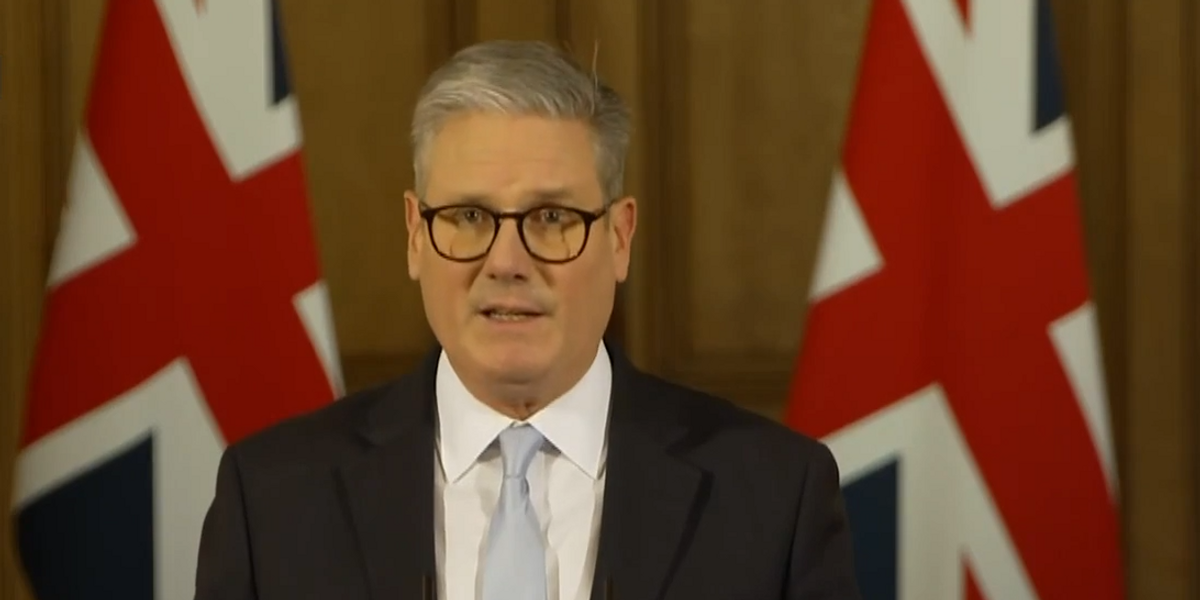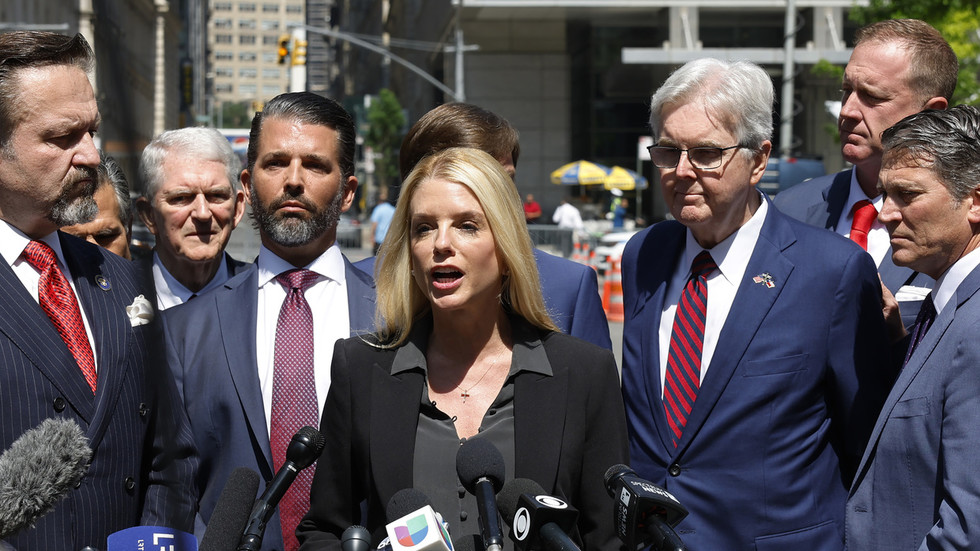The Russian ruble has slid to its lowest levels against the dollar since the invasion of Ukraine and weakened against the Chinese yuan.
Moscow will likely be able to halt the freefall triggered by mounting sanctions pressure, but its value will continue to gradually decline in 2025, analysts say.
What happened?
The Russian ruble tumbled to its lowest level since March 2022 on Wednesday, crossing 113 rubles per U.S. dollar on the Forex exchange markets.
Russia halted trading in dollars and euros on its leading financial marketplace, the Moscow Exchange (MOEX), in June in response to U.S. sanctions. Because the ruble is mostly traded on the Forex currency markets among various international players with limited participation of Russian companies, some analysts say that this benchmark is not a true indicator of the ruble's strength.
And yet, the ruble's decline is visible not just in the Forex currency markets but across the board.
Within Russia, rubles are exchanged between banks — or between banks and customers — for dollars and euros. The Central Bank publishes its official ruble exchange rate based on these transactions. Russian media report that it is possible to buy cash dollars at currency exchange offices in Moscow at a slight premium to the official rate.
The Central Bank's official ruble-dollar exchange rate rose to 108 on Thursday, up 3% from Wednesday.
The ruble also weakened against China’s yuan, which is still traded on the Moscow Exchange. The ruble fell below the mark of 15 per yuan on Wednesday, the first time since March 2022.
“The market related to the exchange of the Russian ruble is segmented and illiquid,” economist Sofia Donets said. “For now, the most reliable indicator of the exchange rate is probably the yuan exchange rate. The imputed rate, if we look at the cross rate of the yuan to the dollar, is now closer to 108, but the reality of rapid weakening [of ruble] is evident.”
Why did the ruble exchange rate drop?
Analysts have offered several explanations for the ruble's sudden downturn. Simply put, new Western sanctions and seasonal factors increased the demand for foreign currency, and Russian exporters did not sell enough currency to offset this increase.
The latest U.S. restrictions on Moscow on Nov. 21 target Gazprombank, the largest and hitherto most important remaining non-sanctioned Russian bank used by Moscow for energy trade, among many other institutions.
Gazprombank worked not only to service Gazprom's gas trade, but all of Russia's foreign trade, said Sergei Vakulenko, a senior fellow at the Carnegie Russia Eurasia Center.
The fresh U.S. sanctions threaten the Russian economy, particularly its foreign currency export earnings, said Maximilian Hess, founder of Enmetena Advisory and a fellow at the Foreign Policy Research Institute.
"The sanctions have played a key role by targeting the main vector of Russian energy payments and Chinese payment routes to and through China by targeting VTB Shanghai," Hess told The Moscow Times.
The new restrictions compound the secondary U.S. sanctions on the Russian financial sector announced last December, Hess said.
The potential end of Russia's pipeline gas supplies to Europe via Ukraine next year could also impact financial markets, he added.
"With escalation and uncertainty in a situation [like the current one], people usually go into safe assets, particularly into [hard] currency. Expectations that everything will be shut down, and now is the last chance to buy dollars and euros,” Vakulenko told Deutsche Welle.
Seasonal factors like heightened demand for imports during the holidays also played a role.
“There is always a seasonal increase in the need for imports and foreign currency in the fourth quarter. Last year the gap was covered by a high rate of return on foreign currency earnings. Now there is no such thing, hence the ruble’s collapse,” analyst Pavel Ryabov said.
The volume of foreign currency sales of major exporters in Russia's domestic market increased to $10.3 billion in October 2024 from $8.3 billion in September, but this is still lower than in October 2023 ($12.5 billion), Ryabov pointed out.
In July and then in October, the Russian government eased requirements for major Russian exporters to convert their foreign currency earnings into rubles.
Who are the losers?
The ruble's exchange rate contributes to inflation by raising the price of imported goods and making travel more expensive for Russians.
With 25% of Russia’s consumer goods imported from abroad, a 10% drop in the ruble exchange rate could add up to 2.5 percentage points to Russia's inflation rate, according to VTB’s Pyanov.
Meanwhile, Russia has already been battling elevated prices, with official projections estimating inflation to reach 8-8.5% this year — double the Central Bank’s target of 4%.
What can Russia do to prop up the ruble?
The Kremlin has several options to halt the ruble’s slide, but doing so will prove more difficult than in the past, analysts said.
Previous ruble declines caused foreigners to invest in cheaper rubles in anticipation of a higher Central Bank key rate, while domestic production was boosted with consumers switching to cheaper homemade goods, economist Alexander Kolyandr said.
Today, however, the Russian market is out of bounds for international capital, while the country's overheated economy cannot increase production, Kolyandr wrote.
Moreover, the Central Bank has little room to hike interest rates and make ruble holdings more attractive. The Russian key interest rate is already at a record high of 21%.
This leaves the Central Bank to halt foreign currency purchases, which are designed to diversify the country's reserves, and for Russian exporters to increase sales of their foreign currency holdings.
The most effective tool would be to force Russian exporters to buy rubles with their foreign exchange revenue, Kolyandr noted.
While this would help stop the currency’s decline, it would shift problems onto exporters who need the currency for their operations, he said.
Pavel Ryabov cited increasing the share of payments for imports in rubles, more foreign currency converted into rubles by exporters, and extending the moratorium on currency purchases by the Central Bank as ways to curb the ruble's decline.
However, he noted that Russian companies may have problems bringing their foreign currency earnings back into the country due to issues with foreign banks.
How far will the ruble fall?
Most Russian experts expect that the ruble will likely stabilize around the 100-120 mark rather than spiral to 150 or more rubles to the dollar.
Ryabov said he does not expect the ruble to consolidate above 130 per dollar in 2025 and that it will likely be lower than that.
“The average annual exchange rate will gravitate toward the 100 mark already from the beginning of 2025, return of the exchange rate below 100 is possible and more than probable under the influence of fluctuations of import and export flows, but stabilization [of the ruble] in the range of 90-95 [per dollar] will not happen,” he noted.
Economist Dmitry Polevoy said the "sustainable level" for the ruble's exchange rate in 2025 would be closer to 95-105 per dollar than above 110 rubles per dollar.
The ruble will stabilize "around current levels" in the next two to three months, but there will be no return to its pre-shock levels, economist Alexander Isakov wrote on Wednesday.
A Message from The Moscow Times:
Dear readers,
We are facing unprecedented challenges. Russia's Prosecutor General's Office has designated The Moscow Times as an "undesirable" organization, criminalizing our work and putting our staff at risk of prosecution. This follows our earlier unjust labeling as a "foreign agent."
These actions are direct attempts to silence independent journalism in Russia. The authorities claim our work "discredits the decisions of the Russian leadership." We see things differently: we strive to provide accurate, unbiased reporting on Russia.
We, the journalists of The Moscow Times, refuse to be silenced. But to continue our work, we need your help.
Your support, no matter how small, makes a world of difference. If you can, please support us monthly starting from just $2. It's quick to set up, and every contribution makes a significant impact.
By supporting The Moscow Times, you're defending open, independent journalism in the face of repression. Thank you for standing with us.
Continue
![]()
Not ready to support today?
Remind me later.

 By The Moscow Times | Created at 2024-11-28 13:20:20 | Updated at 2024-11-28 15:50:58
2 hours ago
By The Moscow Times | Created at 2024-11-28 13:20:20 | Updated at 2024-11-28 15:50:58
2 hours ago








